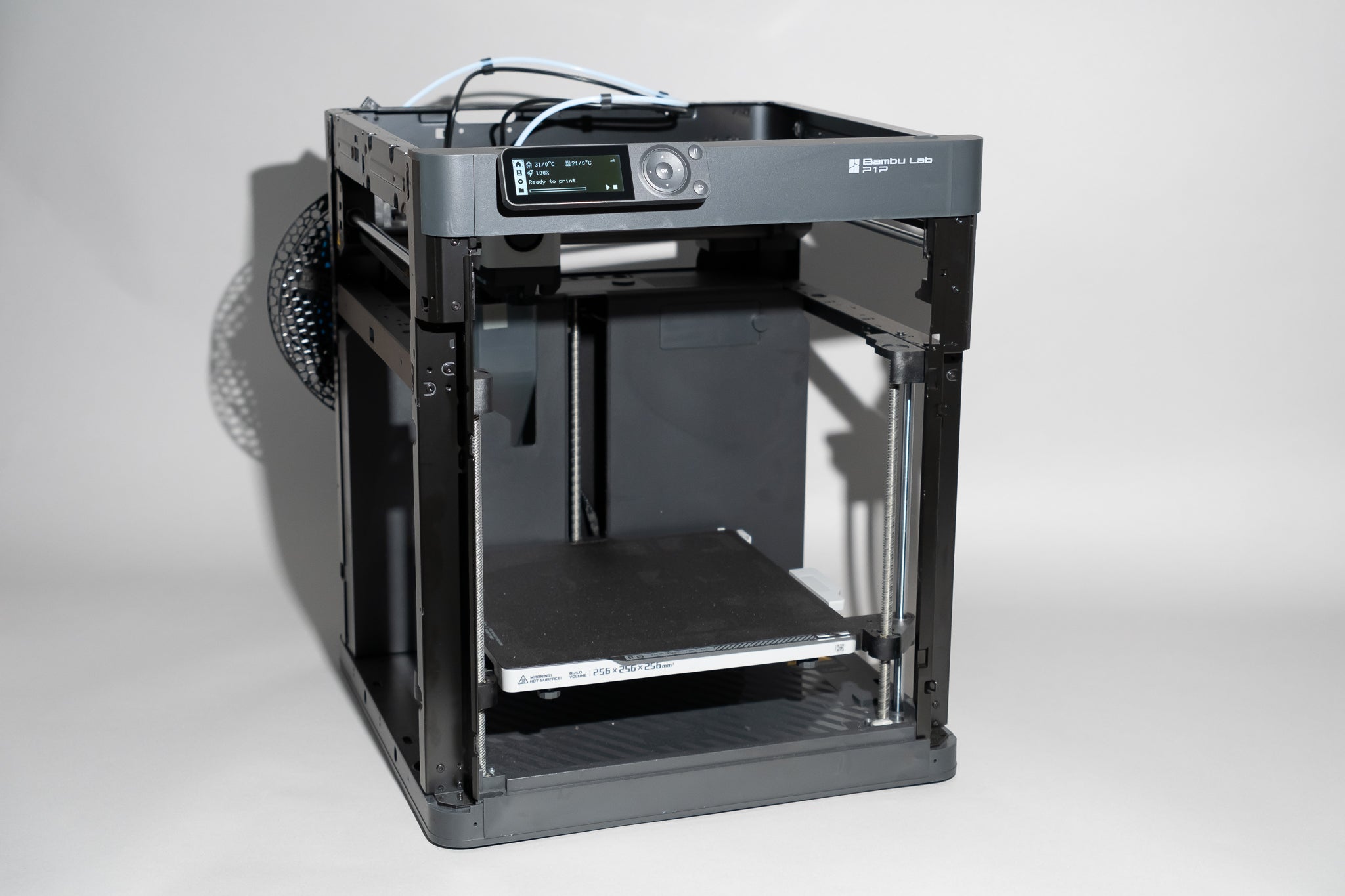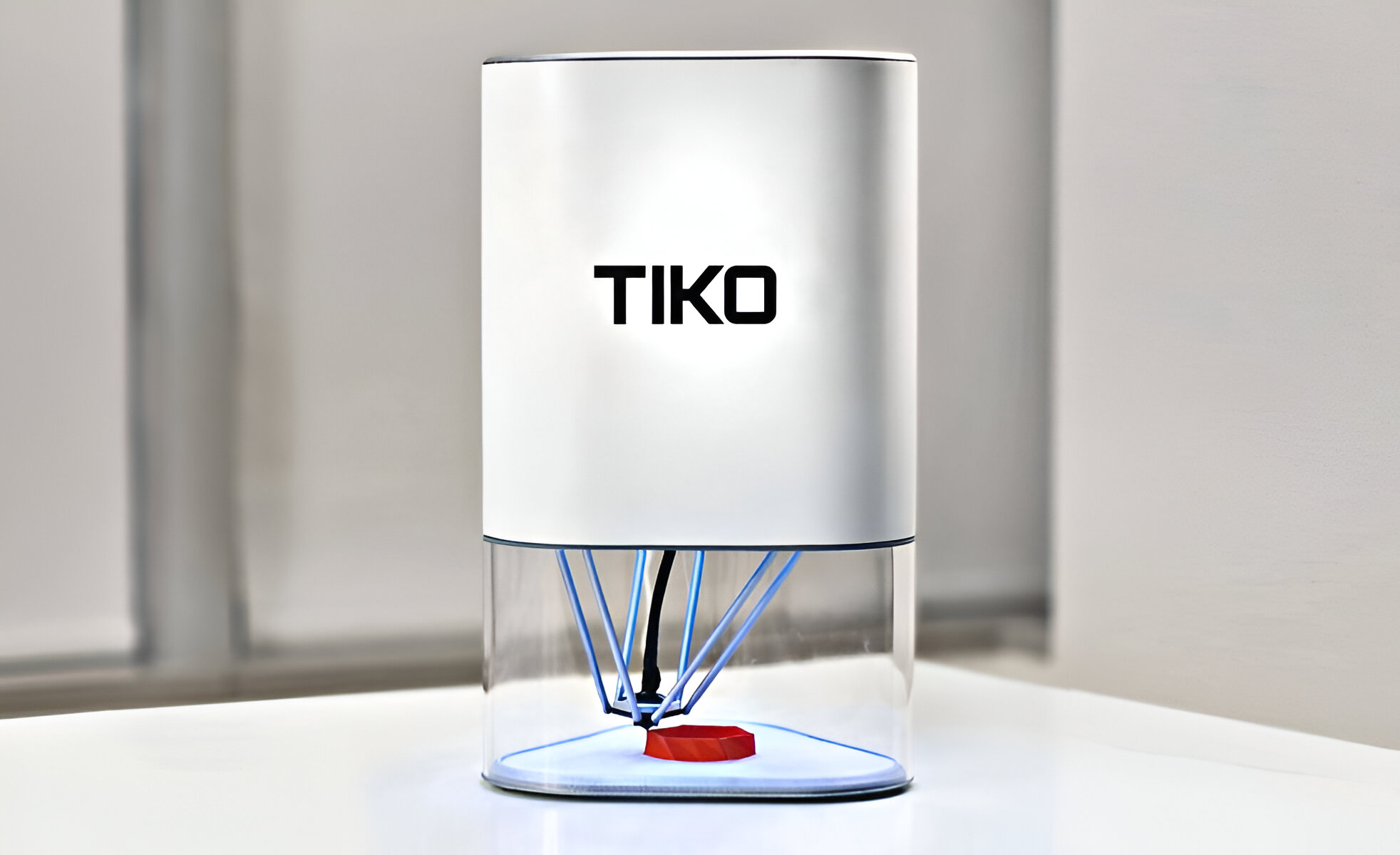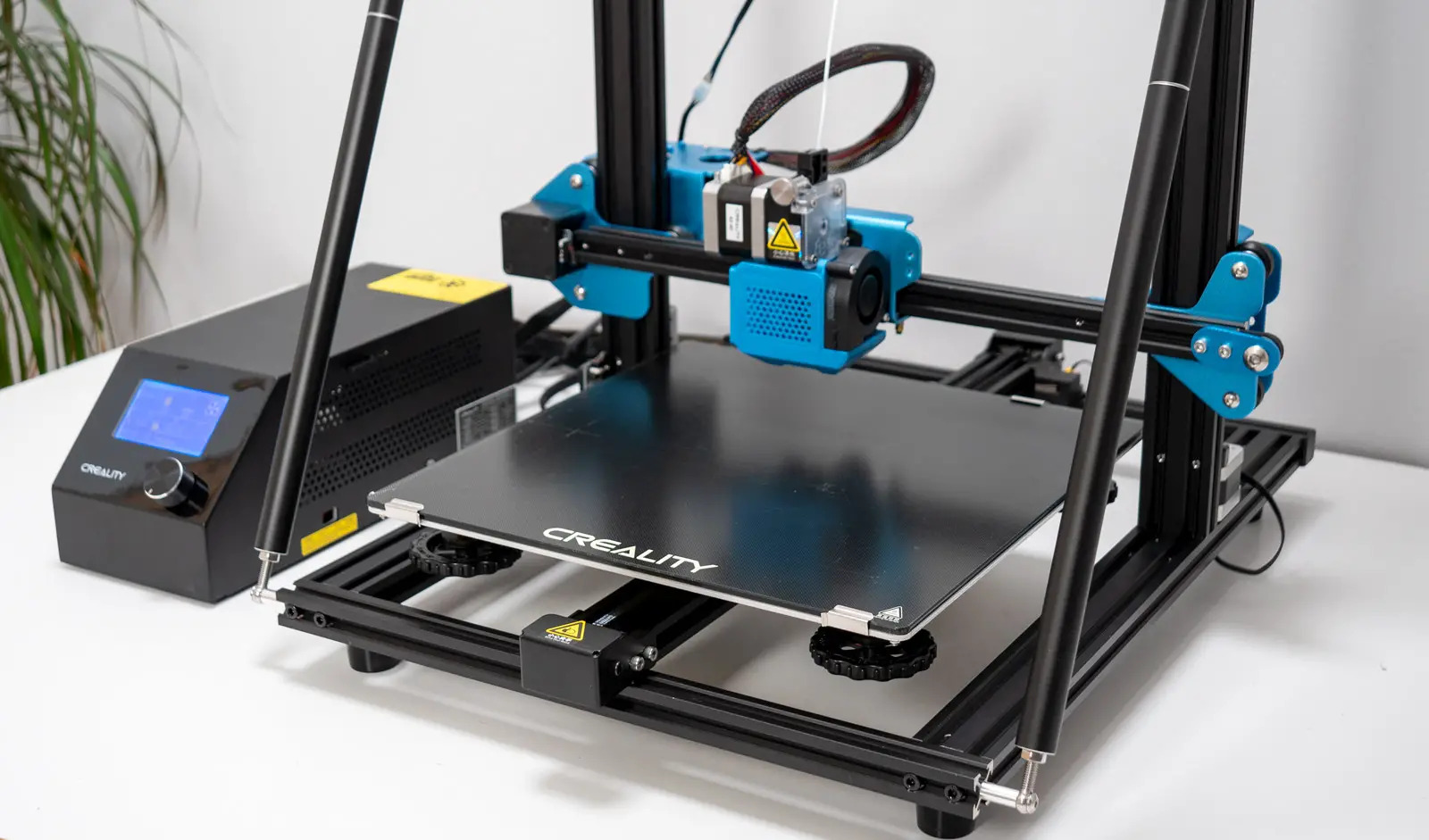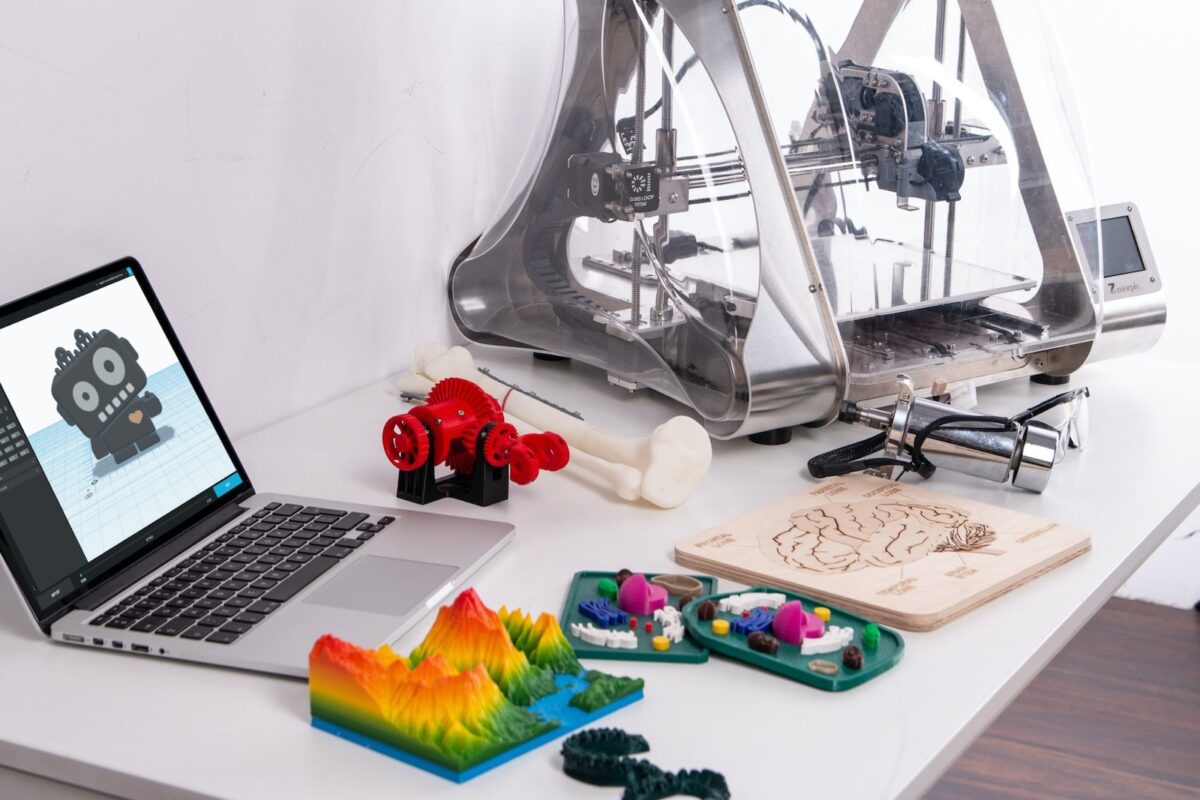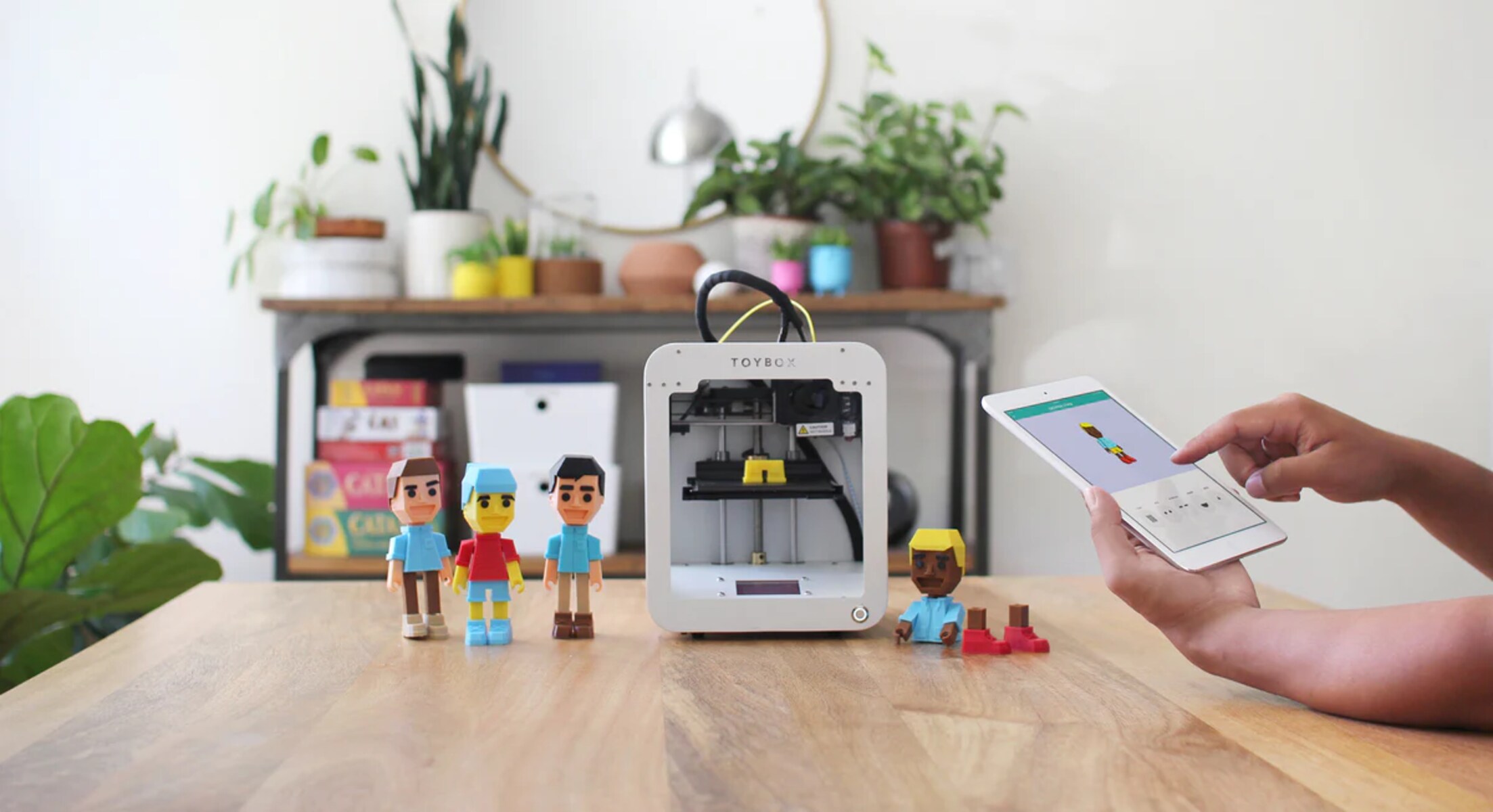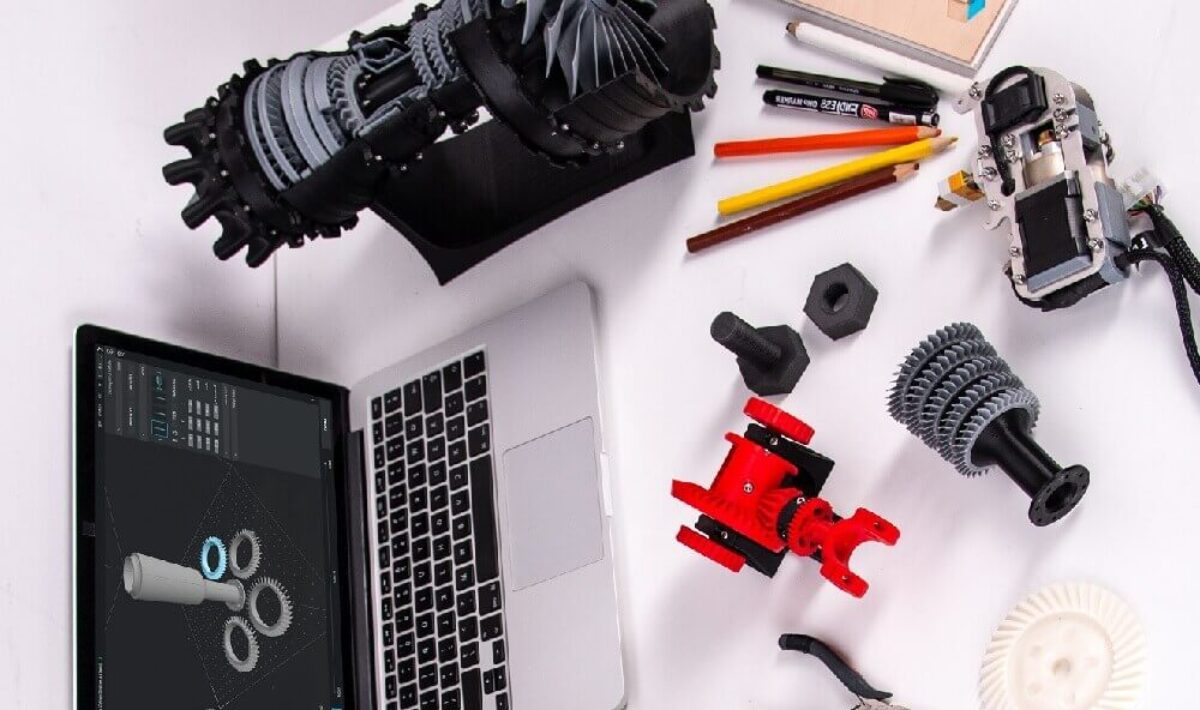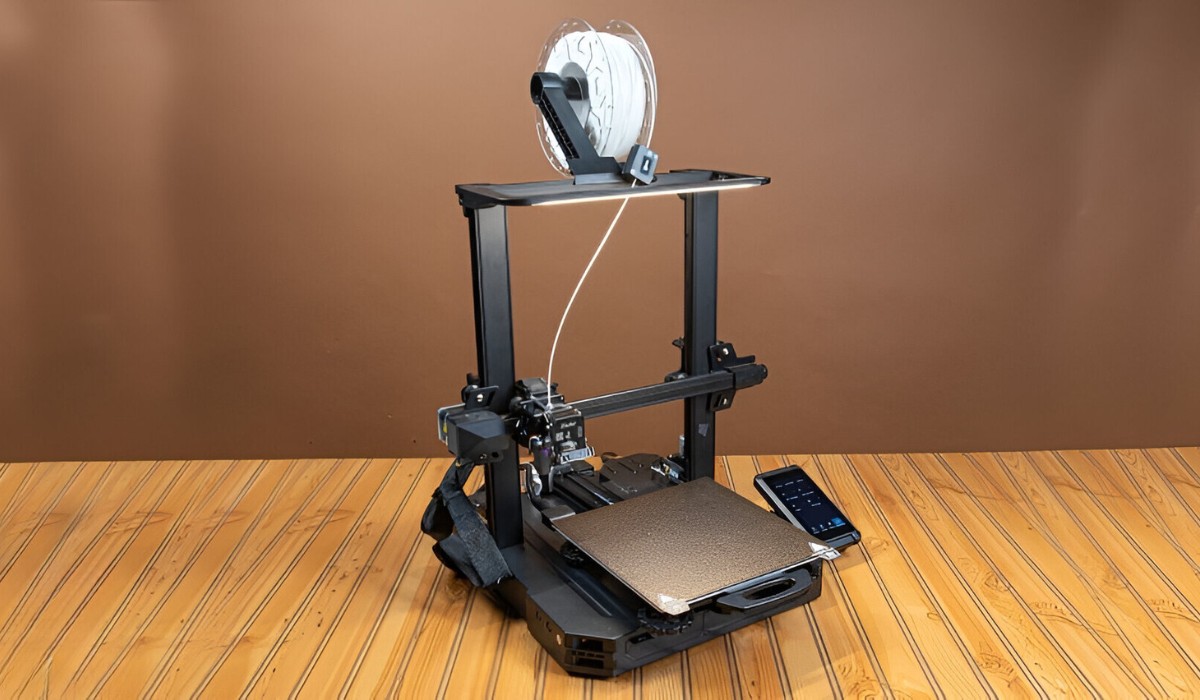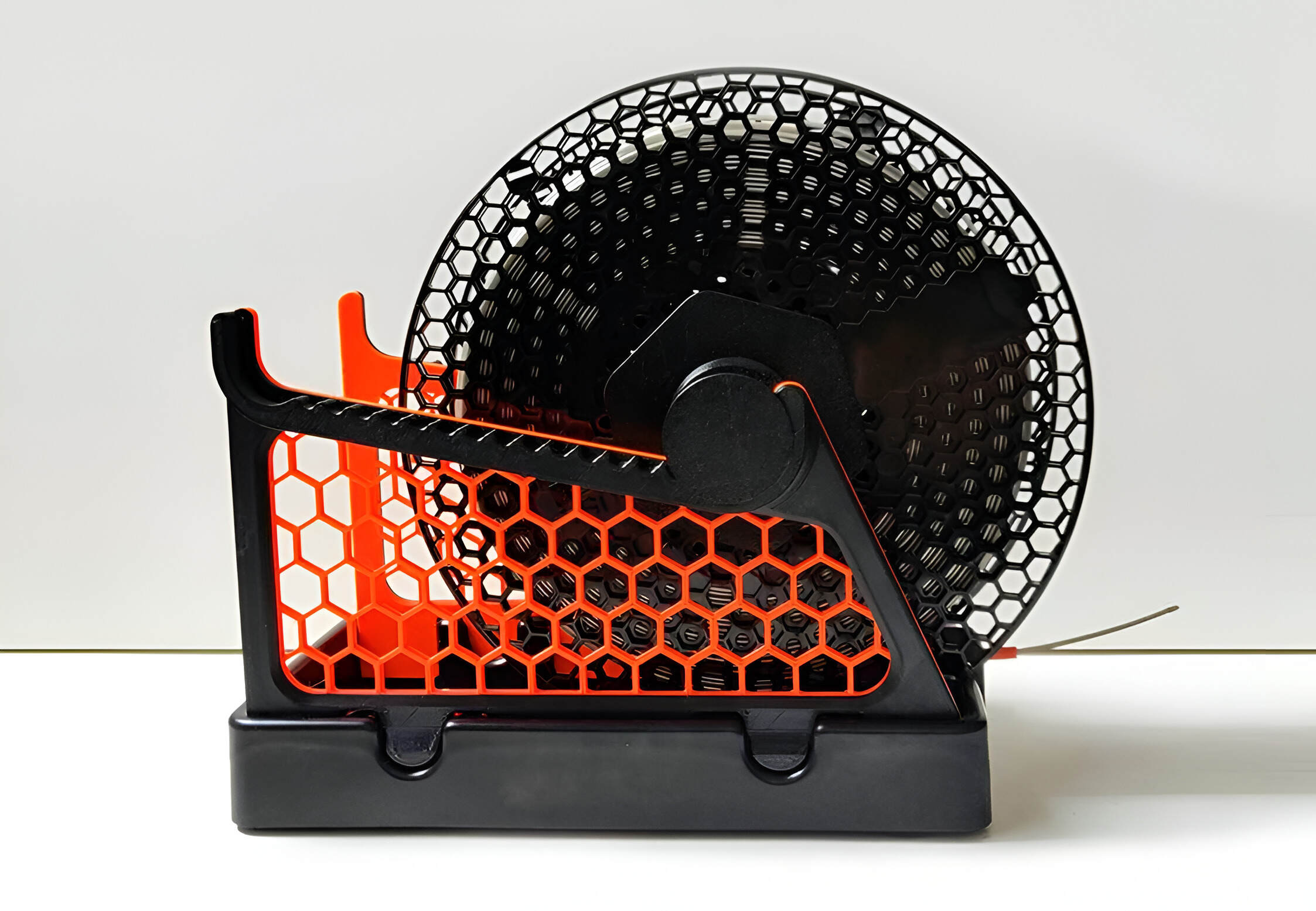Introduction
3D printing has revolutionized various industries, allowing individuals to bring their ideas to life in a matter of hours. However, the cost of purchasing a 3D printer can be a barrier for many enthusiasts and hobbyists. But what if I told you that you could get a 3D printer for free?
In this article, we will explore various strategies and avenues that can help you obtain a 3D printer without breaking the bank. From joining makerspaces to participating in online contests, there are numerous opportunities to acquire a 3D printer at little to no cost.
Before we dive into the details, it’s important to note that while some methods may provide you with completely free access to a 3D printer, others may require a minimal investment or effort on your part. However, with a little dedication and resourcefulness, you can get your hands on a 3D printer without spending a fortune.
Now, let’s explore the different ways you can obtain a 3D printer for free or at a significantly discounted price.
Join a Makerspace
One of the most popular and effective ways to access a 3D printer for free is by joining a local makerspace. Makerspaces are collaborative workspaces where individuals with common interests, such as 3D printing, woodworking, or electronics, come together to share equipment, knowledge, and ideas.
By becoming a member of a makerspace, you gain access to a wide range of tools and machinery, including 3D printers. These spaces often provide an inclusive and supportive environment, where you can learn from experienced members and collaborate on projects.
To find a makerspace in your area, start by conducting an online search or reaching out to local community organizations. Many makerspaces offer membership options at various price points, including free or discounted access for students or individuals facing financial constraints.
Once you’ve joined a makerspace, you can typically book a time slot to use their 3D printers and unleash your creativity. It’s important to familiarize yourself with the rules and regulations of the makerspace, as well as any training requirements for using the equipment safely and effectively.
Additionally, being a part of a makerspace expands your network, allowing you to connect with like-minded individuals who share your passion for 3D printing. These connections can be invaluable for learning new techniques, discovering exciting projects, and potentially finding opportunities to collaborate on projects that require 3D printing.
In summary, joining a makerspace provides you with access to a 3D printer without the need for a significant financial investment. It also offers a supportive community that can help you expand your skills and knowledge in the world of 3D printing.
Participate in Online Contests and Giveaways
An exciting and potentially rewarding way to get your hands on a free 3D printer is by participating in online contests and giveaways. Many 3D printer manufacturers, as well as online platforms and communities, run regular contests and promotions where you have the chance to win a 3D printer.
To increase your chances of winning, keep an eye out for these contests and giveaways on social media platforms, industry forums, and dedicated 3D printing websites. Follow reputable 3D printer manufacturers and influencers to stay updated on the latest opportunities.
Contests may require various types of entries, ranging from submitting a creative design, showcasing a unique project, or promoting a brand through social media or blog posts. Make sure to read the contest rules and requirements carefully to maximize your chances of success.
Additionally, consider participating in online communities and forums dedicated to 3D printing. These platforms often have regular giveaways or raffles for members, providing you with another avenue to potentially win a free 3D printer.
While winning a 3D printer through contests and giveaways is not guaranteed, it’s a low-risk method that can offer exciting possibilities. Even if you don’t win the grand prize, there may be other rewards, such as discounted offers or exclusive deals that can make acquiring a 3D printer more affordable.
Remember, participating in online contests and giveaways requires some effort and creativity. However, the potential payoff of receiving a free 3D printer is well worth it.
Apply for Grants and Funding
If you’re looking for more substantial financial assistance to acquire a 3D printer, applying for grants and funding programs can be a viable option. There are various organizations, foundations, and government agencies that offer grants specifically targeted towards supporting innovative projects and technologies like 3D printing.
To begin your search for grants, start by researching local and national funding opportunities in your country. Look for grants that prioritize education, research and development, or community initiatives. These grants may provide financial support for purchasing equipment, including 3D printers, as well as funding for training and project implementation.
When applying for grants, it’s crucial to thoroughly review the application requirements and guidelines. Craft a compelling project proposal that clearly outlines the value and impact of bringing a 3D printer into your community, educational setting, or research project.
Consider partnering with educational institutions, non-profit organizations, or industry associations that have experience in securing grants. Collaborating with established partners can strengthen your application and increase the likelihood of receiving funding.
Aside from traditional grants, crowdfunding platforms such as Kickstarter and Indiegogo can also be a means to raise funds for purchasing a 3D printer. Create a compelling campaign that showcases your passion, expertise, and the potential benefits of having a 3D printer. Engage with your network and promote your campaign on social media to increase visibility and attract potential backers.
Remember that the grant application process can be competitive, and not all applications will receive funding. Persistence, clarity of purpose, and aligning your project with the goals and criteria of the grant provider will greatly increase your chances of success.
By applying for grants and funding programs, you can access financial resources that will make it possible to acquire a 3D printer and pursue your innovative projects.
Borrow from Libraries or Educational Institutions
If you’re looking for a temporary or short-term access to a 3D printer, borrowing from libraries or educational institutions can be a practical and cost-effective solution. Many libraries and schools have recognized the educational value of 3D printing and have equipped their facilities with 3D printers that are available for public use or lending.
Start by researching local libraries, universities, or community colleges in your area that offer access to 3D printers. Some libraries have dedicated makerspaces or digital fabrication labs where you can use their 3D printers along with other equipment and tools.
Libraries and educational institutions may have different policies and procedures for borrowing or using their 3D printers. Some may offer free access to these facilities, while others may require you to pay a minimal fee or attend a training session before gaining access to the equipment.
When borrowing from libraries or educational institutions, it’s essential to be respectful of the terms and conditions. Make sure to familiarize yourself with any usage limits, time restrictions, or specific guidelines for materials and designs.
Additionally, take advantage of the resources available at these facilities. Libraries and schools often offer workshops, classes, or tutorials on 3D printing, which can help you enhance your skills and knowledge in this field.
By borrowing from libraries or educational institutions, you can gain access to a 3D printer without the need to invest in one yourself. This allows you to explore the possibilities of 3D printing, validate your ideas, and complete your projects without the long-term commitment of owning a 3D printer.
Look for Recycling or Repurposing Programs
Another creative way to obtain a 3D printer for free or at a significantly reduced cost is by exploring recycling or repurposing programs. These programs focus on collecting used or unwanted 3D printers, refurbishing them, and making them available to individuals or organizations in need.
Start by researching local electronics recycling centers or organizations that specialize in repurposing technology. These centers often accept donations of outdated or non-functional 3D printers. By donating your old 3D printer, you not only contribute to reducing electronic waste but also open up the opportunity for someone else to benefit from its functionality.
Some recycling centers or organizations may have programs in place to refurbish these donated printers, bringing them back to working condition. These refurbished printers are then offered at little to no cost to individuals or groups who may not otherwise have access to a 3D printer.
Additionally, check with local businesses or educational institutions that may have surplus 3D printers or outdated models that they no longer use. These entities may be willing to donate or sell their excess equipment at a discounted price, providing you with an affordable option to acquire a 3D printer.
By participating in recycling or repurposing programs, you not only have the opportunity to obtain a 3D printer for free or at a lower cost but also contribute to sustainability and innovation within the 3D printing community.
Take the time to connect with local organizations or recycling initiatives to learn more about their programs and how you can get involved. By being proactive and exploring these avenues, you may find yourself with a fully functional 3D printer without having to spend a significant amount of money.
Seek Sponsorship from Local Businesses or Companies
If you’re looking for financial support to acquire a 3D printer, reaching out to local businesses or companies for sponsorship can be a fruitful endeavor. Many businesses are interested in supporting educational initiatives, community projects, or innovative ventures, and may be willing to provide financial assistance to help you obtain a 3D printer.
Start by identifying local businesses or companies that have a vested interest in technology, innovation, or STEM education. Consider reaching out to manufacturing companies, technology startups, engineering firms, or even local retailers that specialize in 3D printing equipment.
Draft a compelling sponsorship proposal outlining the benefits and impact of sponsoring a 3D printer for your project or community. Explain why acquiring a 3D printer is essential for your goals and how it aligns with the business or company’s values and objectives.
Emphasize the potential visibility and positive publicity that the sponsor will receive through sponsorship recognition or branding opportunities. Offer to showcase the sponsor’s logo on your project materials, website, or social media platforms as a token of appreciation for their support.
When reaching out to local businesses or companies, ensure that your proposal is clear, concise, and professionally presented. Make a convincing case for why having a 3D printer is not only beneficial to you but also to the broader community or educational environment.
It’s important to approach potential sponsors with a strong understanding of their business and how your project aligns with their interests. Tailor your proposal to their specific needs and goals, emphasizing the potential positive impact that their sponsorship can have on the local community.
Remember that sponsorship requests may not always lead to immediate success, but persistence and a well-prepared proposal can significantly increase your chances of obtaining the necessary funding to acquire a 3D printer.
By seeking sponsorship from local businesses or companies, you not only gain financial support but also build valuable partnerships that can contribute to the long-term success of your project or initiative.
Purchase with Crowdfunding Platforms
If you’re looking to acquire a 3D printer and are open to making a modest investment, crowdfunding platforms offer an excellent opportunity to raise funds from a broader community of supporters. Platforms such as Kickstarter, Indiegogo, and GoFundMe allow individuals to present their projects and gather financial contributions from backers who believe in their vision.
Creating a compelling campaign is key to attracting backers to contribute towards your 3D printer purchase. Start by carefully planning your campaign and setting a realistic fundraising goal that covers the cost of the printer, as well as any additional expenses such as supplies or training materials.
When building your campaign, it’s crucial to showcase the potential benefits and impact of owning a 3D printer. Clearly explain how the printer will be utilized and highlight the innovative projects it will enable. Include high-quality visuals, such as videos and images, to engage and captivate potential backers.
Offer a range of contribution levels and corresponding rewards to incentivize people to support your campaign. Consider offering backers early access to your 3D printed creations, exclusive designs, or personalized thank you notes as a way to express gratitude for their support.
Spread the word about your campaign through social media, personal networks, and relevant online communities. Engage with potential backers by responding to their inquiries, providing updates on the progress of your campaign, and expressing appreciation for their contributions.
Be proactive in showcasing the progress and achievements of your campaign, updating your backers regularly on the status of your project. Demonstrating transparency and accountability will help build trust and maintain the interest of your backers.
While crowdfunding platforms provide an avenue for securing financial support, it’s important to be aware of the risks and challenges associated with running a crowdfunding campaign. Ensure you have a solid plan for fulfilling rewards, managing budget allocations, and addressing any potential setbacks or delays.
By harnessing the power of crowdfunding platforms, you can leverage the support of a community of backers to raise funds for purchasing a 3D printer and bring your creative projects to life.
Check for Government Programs or Initiatives
When looking to acquire a 3D printer for free or at a significantly discounted price, it’s crucial to explore government programs or initiatives that support technological advancements and innovation. Many governments, at the national, regional, or local level, have implemented programs that aim to promote the adoption of emerging technologies, including 3D printing.
Start by researching government websites or contacting relevant government departments or agencies involved in technology, education, or economic development. Look for grants, subsidies, or funding opportunities that specifically target the acquisition of 3D printers for educational institutions, community organizations, or research projects.
Government programs or initiatives may require you to meet certain criteria or demonstrate the potential impact and value of integrating a 3D printer into your project or educational setting. Ensure that you fully understand the eligibility requirements and align your proposal accordingly.
Additionally, some governments may offer tax incentives or exemptions for businesses or organizations that invest in advanced technologies, including 3D printing. These incentives can significantly reduce the financial burden of purchasing a 3D printer.
Stay up-to-date with government announcements, as new programs or initiatives may arise that provide opportunities to access a 3D printer for free or at a reduced cost. Subscribe to newsletters, follow relevant government social media accounts, or join industry associations to stay informed about the latest developments.
Furthermore, consider collaborating with educational institutions or non-profit organizations that partner with the government on technology-related projects. These entities may have established relationships or access to government funding channels that can help facilitate the acquisition of a 3D printer.
By exploring government programs or initiatives, you can tap into potential funding options, incentives, or resources that can make acquiring a 3D printer more affordable and accessible.
Utilize Open-Source DIY Designs and Build Your Own
If you have a DIY spirit and enjoy tinkering with technology, utilizing open-source designs to build your own 3D printer can be a cost-effective and rewarding option. Open-source 3D printer projects provide access to free design files, software, and documentation, allowing you to construct a customized 3D printer according to your specific needs and budget.
Start by researching popular open-source 3D printer designs, such as RepRap, Prusa i3, or MendelMax. These projects have extensive online communities, user forums, and step-by-step guides that provide detailed instructions on building your own 3D printer.
Identify the level of complexity and technical expertise required for each design and choose one that aligns with your skill set and available resources. Consider factors like build size, print resolution, and materials compatibility to select a design that suits your intended use cases.
Once you have chosen a design, source the necessary components and materials. Many online retailers offer DIY kits specifically tailored to open-source 3D printer projects, which can simplify the sourcing process. Alternatively, you can acquire individual components from various suppliers based on your budget and preferences.
Building your own 3D printer can be a time-consuming and involved process, requiring patience and attention to detail. However, the experience allows you to gain a deep understanding of the inner workings of 3D printers and provides the flexibility to customize your machine to your specific needs.
Take advantage of the open-source community for guidance and support during the construction process. Online forums, chat groups, and documentation repositories are valuable resources for troubleshooting, sharing ideas, and receiving advice from experienced DIY enthusiasts.
Building your own 3D printer not only saves costs compared to purchasing a pre-built machine but also allows for future upgrades and modifications as technology evolves. With a DIY approach, you have the ability to continuously improve and optimize your printer based on your evolving requirements.
By utilizing open-source DIY designs, you can embark on an exciting journey of building your own 3D printer, gaining valuable technical skills, and achieving a high level of customization to meet your specific needs.
Explore Free or Discounted Printer Programs for Educators
For educators or those involved in the field of education, there are several programs and initiatives that offer free or discounted access to 3D printers. These programs aim to promote the integration of 3D printing technology into classrooms, providing students with hands-on learning experiences and fostering creativity and innovation.
Start by researching educational institutions, non-profit organizations, or government agencies that focus on STEM education or innovative teaching methods. These entities often offer programs specifically designed to support educators in incorporating 3D printing into their curriculum.
Some programs provide grants or funding opportunities that allow educators to acquire 3D printers for their classrooms at little to no cost. These grants may be available at the national, state, or local level, so it’s important to explore regional resources and funding options.
In addition to grants, educational institutions and non-profit organizations frequently offer discounted pricing on 3D printers for educators. These discounted programs help make 3D printing more accessible and affordable, facilitating its integration into educational settings.
When applying for these programs, be prepared to articulate how 3D printing will enhance your teaching methods, engage students, and foster creativity. Highlight the potential educational outcomes and explain how 3D printing aligns with your educational goals.
Engage with other educators who have participated in these programs to learn from their experiences and gain insights into effective implementation strategies. Online communities, forums, and conferences focused on educational technology can be valuable resources for networking and information sharing.
By exploring free or discounted printer programs for educators, you can access the necessary resources to bring the exciting world of 3D printing into your classroom. This technology has the potential to ignite the creative spark in students, enhance their critical thinking skills, and prepare them for future careers in STEM fields.
Volunteer at 3D Printing Workshops or Events
If you’re looking to gain hands-on experience with 3D printers and potentially access them for free, volunteering at 3D printing workshops or events is an excellent opportunity. Many organizations and communities host workshops, exhibitions, or conferences focused on 3D printing, and they often welcome volunteers to assist with various tasks.
Start by researching local makerspaces, community centers, educational institutions, or industry conferences that host 3D printing events. Reach out to them and express your interest in volunteering. These organizations are usually keen to have enthusiastic individuals contribute their time and expertise.
When volunteering, you may have the opportunity to work closely with 3D printers, helping set them up, operate them, or provide assistance to participants. This hands-on experience allows you to familiarize yourself with different types of 3D printers, understand their functionalities, and learn best practices for optimal performance.
Volunteering at 3D printing workshops or events also provides an excellent networking opportunity. You’ll have the chance to connect with professionals, educators, and fellow enthusiasts in the 3D printing community. Creating meaningful connections can open doors to additional learning opportunities, collaborations, and even access to free or discounted 3D printers in the future.
Additionally, volunteering gives you the chance to learn from experts and experienced 3D printing practitioners. Engage in conversations, ask questions, and seek advice to deepen your understanding of the technology and expand your skill set.
Remember to approach volunteering with a willingness to contribute and a positive attitude. Demonstrating your dedication, reliability, and enthusiasm can leave a lasting impression on organizers, potentially leading to future opportunities for involvement or access to resources.
By volunteering at 3D printing workshops or events, you not only gain valuable practical knowledge and experience but also contribute to the growth and success of the 3D printing community.
Connect with 3D Printing Enthusiasts and Exchange Equipment
Connecting with fellow 3D printing enthusiasts can provide opportunities to exchange equipment, collaborate on projects, and access 3D printers without significant financial investments. The 3D printing community is often passionate about sharing knowledge and resources, making it a great place to explore equipment exchanges.
Start by joining online forums, social media groups, or dedicated 3D printing communities. These platforms allow you to connect with like-minded individuals who share your interest in 3D printing. Engage in discussions, ask questions, and participate in conversations to build relationships with community members.
When you’ve established connections within the community, express your interest in equipment exchanges. Many enthusiasts own multiple 3D printers or may have upgraded their equipment and are willing to trade or lend their older machines. Be respectful of their time and resources, and offer something of value in return, such as your expertise, assistance with a project, or access to materials.
Attending local maker fairs, workshops, or meetups is another effective way to connect with 3D printing enthusiasts in your area. These events often bring together individuals with a shared interest in technology and innovation, providing opportunities for networking and equipment exchange.
When exchanging equipment, establish clear expectations and guidelines to ensure a fair and mutually beneficial agreement. Clearly communicate the condition of the equipment being exchanged, any associated costs, and the duration of the exchange if it’s temporary.
Be open to starting small and building trust within the community before engaging in equipment exchanges. Joining group projects, participating in collaborative design challenges, or offering assistance with troubleshooting are great ways to build relationships and demonstrate your commitment to the community.
Remember that equipment exchanges may not always result in permanent ownership of a 3D printer, but they can provide valuable opportunities to explore different models, test their capabilities, and expand your 3D printing experience. Moreover, building relationships with enthusiasts opens doors to further collaboration and potential access to 3D printers and resources in the long term.
By connecting with 3D printing enthusiasts and engaging in equipment exchanges, you can leverage the spirit of sharing and collaboration within the community to access 3D printers and further develop your skills and knowledge in this exciting field.







